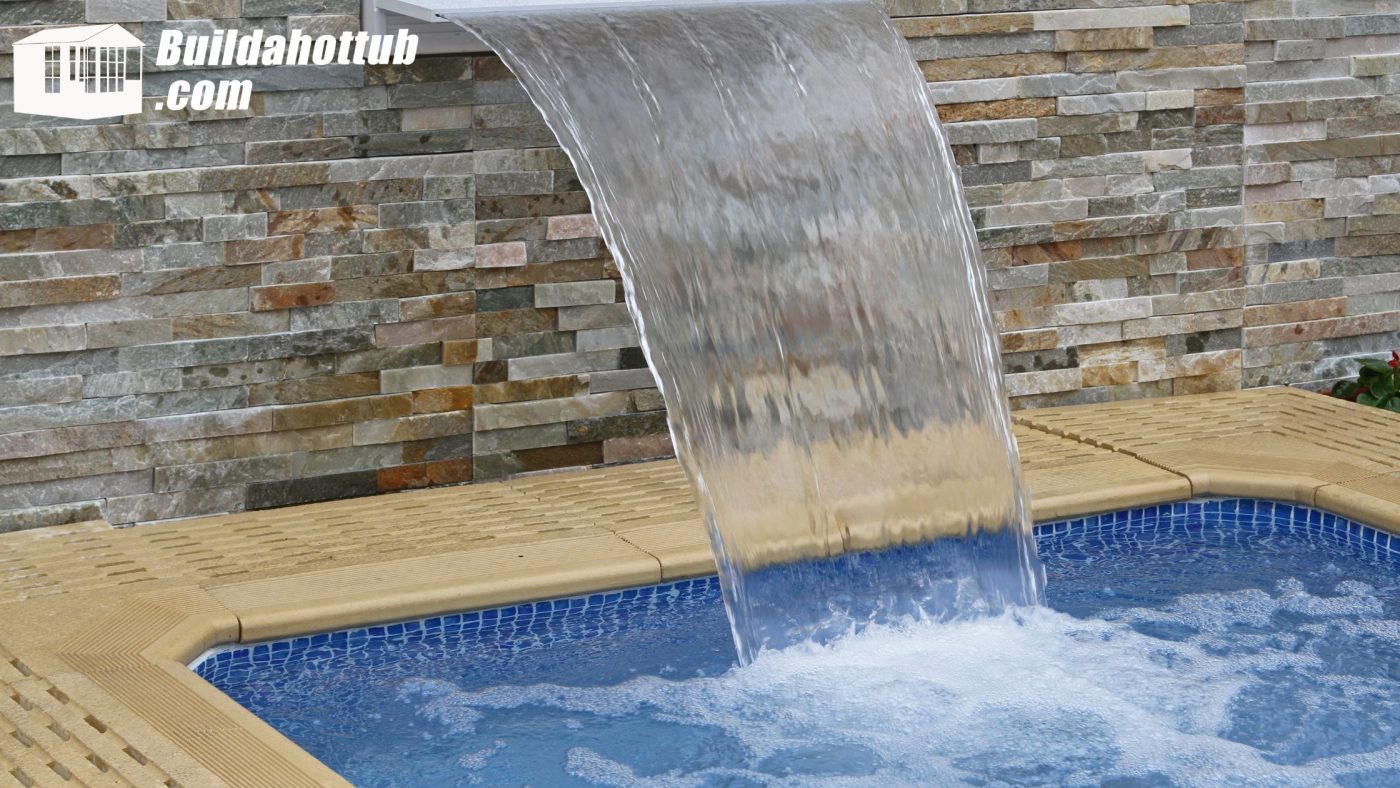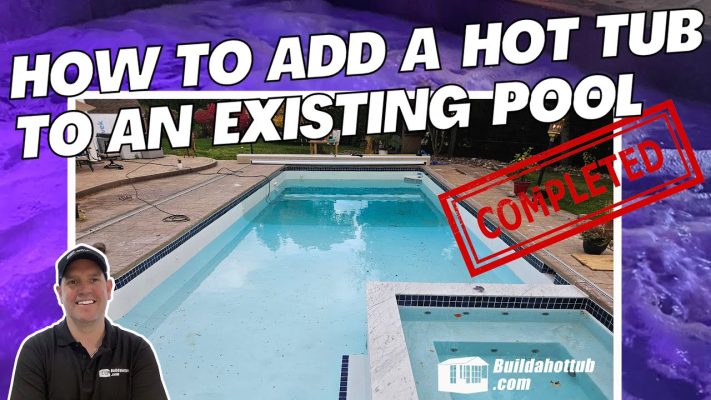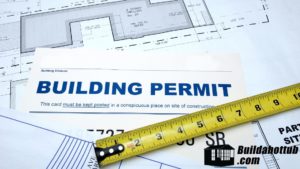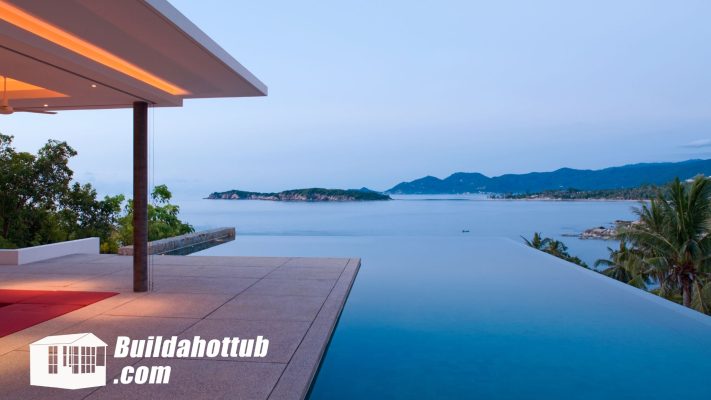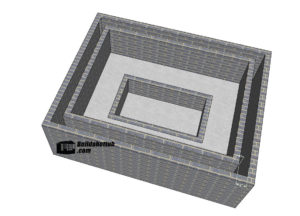Are you looking for a way to add a touch of fun and relaxation to your backyard? Look no further than mini pools! These compact swimming spots are the perfect solution for those who want to enjoy a refreshing dip without having to invest in a full-sized pool.
Mini pools come in a variety of styles and designs, so you’re sure to find one that fits your backyard and lifestyle perfectly. Whether you want to lounge on a float in the sun, play with the kids, or entertain guests, a mini pool is the perfect addition to any backyard.
In this blog post, we’ll dive into the world of mini pools and explore some of the best options available on the market. So sit back, relax, and get ready to add some fun and excitement to your outdoor space.
What is a Mini Pool?
This blog and my YouTube Channel focus very much on the DIY aspect of pools and hot tubs. So, whilst there are plenty of options that you can buy in the store, I am going to focus in this article on building your own mini pool. I will however touch on some of the options available.
What is a Mini Dip Pool?
A mini dip pool, often referred to as a “plunge pool,” is a compact and shallow pool designed for relaxation, cooling off, or hydrotherapy. These pools are much smaller in size compared to traditional swimming pools, making them ideal for homeowners with limited outdoor space. The primary characteristics of a mini dip pool include:
-
Size: Mini dip pools are typically quite small, with dimensions that can vary but are often in the range of 4 to 7 feet in length and 4 to 7 feet in width. The depth is relatively shallow, usually ranging from 3 to 5 feet, which allows for a quick dip without the need for full swimming.
-
Purpose: These pools are primarily designed for relaxation and cooling off on hot days. They are also suitable for hydrotherapy, making them a popular choice for people seeking the therapeutic benefits of warm water without the space or cost of a traditional hot tub.
-
Hydrotherapy: Mini dip pools often include hydrotherapy features, such as jets, which can provide a soothing and massaging effect to help with muscle relaxation and stress relief.
-
Compact Design: Their compact design allows mini dip pools to fit into small backyards, patios, or even indoor spaces. Some models can be installed above ground, while others are in-ground.
-
Water Temperature: Mini dip pools can be heated to a comfortable temperature, offering the benefits of warm water even in colder seasons.
-
Ease of Maintenance: Due to their smaller size, these pools are generally easier to maintain than larger swimming pools. They require less water, fewer chemicals, and less energy for heating and filtration.
-
Aesthetics: Mini dip pools come in various designs and materials, making it possible to choose a style that complements the aesthetics of your outdoor or indoor space.
-
Year-Round Use: Depending on the heating system and location, mini dip pools can be used year-round, providing a convenient space for relaxation, exercise, and hydrotherapy.
These small pools have gained popularity as a space-efficient solution for homeowners who want to enjoy the benefits of a pool without the space and cost associated with traditional swimming pools. They are a versatile addition to outdoor living spaces and are suitable for individuals and families looking for a compact yet functional water feature.
What construction methods are there to build a mini pool?
There are several construction methods that can be used to build a mini pool, including:
Fiberglass: Fiberglass pools are pre-made shells that are delivered to your property and installed in a hole in the ground. This is a quick and easy option, but it may be more expensive than other methods.
Concrete: Concrete is a popular choice for mini pools as it is durable and can be moulded into any shape or size. In its most basic form, this method involves digging a hole, building a structure from concrete, and then waterproofing it. I know I am over simplifying things here but I want to give a 1000ft overview
Vinyl Liner: Vinyl liner pools are constructed with a metal or block walled structure, which is then covered in a liner made of vinyl. The downsides to this method is that you will need to get a liner custom made. Also, fitting the liner can be problematic and you may need to have a pool professional come in to install it for you – which kind of defeats the whole DIY thing.
Portable: Portable mini pools are inflatable or pre-made plastic pools that can be set up on any level surface. This is the quickest and most affordable option, but it may not be as durable as other methods. I’m not a fan of these of course, given this blog is about building pools, but I have included it anyway as an option.
Ultimately, the construction method you choose will depend on your budget, desired look, and the amount of maintenance you are willing to do.
How do you build little pools?
Building a small pool, such as a mini dip or plunge pool, can be a great addition to your home for relaxation and hydrotherapy. Here are the general steps to build a small pool:
-
Planning and Permits:
- Determine the location and size of the pool.
- Check local building codes and obtain any necessary permits.
- Plan the pool’s design and layout.
-
Excavation:
- Excavate the area to the desired depth and dimensions of the pool. Depending on the design, this can be done by hand or with machinery.
-
Foundation:
- Create a solid and level base for the pool. This often involves compacting and leveling the soil or adding a concrete pad.
-
Pool Shell:
- Choose a pool shell material. Fiberglass, concrete, and vinyl are common options. The choice will affect the installation process.
- Install the pool shell according to the manufacturer’s instructions. For concrete pools, this may involve creating a rebar framework and spraying or pouring concrete. For fiberglass or vinyl pools, the shell is typically placed in the excavated hole.
-
Plumbing and Filtration:
- Install the pool’s plumbing and filtration system. This includes pipes, pumps, filters, and any additional features like jets for hydrotherapy.
-
Electrical Work:
- If the pool has lighting or hydrotherapy jets, electrical work may be needed. Ensure that all wiring complies with local electrical codes.
-
Finishing:
- Finish the interior of the pool with the chosen surface material. This could be pool plaster, tile, or a vinyl liner.
-
Water Supply and Circulation:
- Connect the pool to the water supply and circulation system. Ensure proper water chemistry and balance.
-
Safety Features:
- Install safety features such as handrails, steps, or a safety cover, as needed.
-
Landscaping:
- Landscape the area around the pool with suitable hardscaping, such as pavers or decking, and softscaping like plants or grass.
-
Water Treatment and Balancing:
- Balance the pool’s water chemistry to ensure safe and clear water. This includes adjusting pH, alkalinity, and adding sanitizing agents.
-
Heating (Optional):
- If you want to maintain a warm water temperature, install a pool heater.
-
Furniture and Accessories:
- Add furniture, lighting, and any desired accessories for comfort and aesthetics.
-
Regular Maintenance:
- Maintain the pool by regularly cleaning filters, checking and adjusting water chemistry, and performing any necessary repairs.
Building a small pool involves careful planning, construction, and maintenance to ensure a safe and enjoyable space.
How to keep little swimming pools clean?
Keeping a small swimming pool, like a plunge pool or a mini dip pool, clean is essential to ensure a safe and enjoyable swimming experience. Here are some steps to maintain the cleanliness of a small swimming pool:
-
Skimming and Cleaning Debris:
- Use a skimmer or a pool net to remove leaves, insects, and other debris from the surface of the water. Regularly skim the pool to prevent debris from sinking and settling at the bottom.
-
Brushing:
- Brush the pool walls, steps, and any other surfaces regularly to prevent the buildup of algae and dirt. Use a pool brush appropriate for the pool’s surface material.
-
Vacuuming:
- Use a pool vacuum to clean the pool bottom. There are manual and automatic pool vacuums available. Vacuuming helps remove fine particles and sediment that can cloud the water.
-
Filtration:
- Ensure the pool’s filtration system is in good working condition. Clean or backwash the filter regularly as recommended by the manufacturer.
-
Water Chemistry:
- Regularly test the water for pH, chlorine (or other sanitizing agents), total alkalinity, and calcium hardness. Maintain the water within the recommended ranges for these parameters.
-
Shock Treatment:
- Perform a shock treatment when needed to oxidize contaminants, kill bacteria, and remove chloramines. Follow the product’s instructions for dosage.
-
Algae Prevention:
- Add algaecide to the pool to prevent the growth of algae. This is especially important if the pool gets a lot of sunlight.
-
Circulation:
- Ensure proper water circulation by running the pool’s pump and filter for an adequate number of hours each day. This helps distribute water evenly and ensures it passes through the filtration system.
-
Regular Water Replacement:
- Depending on usage and water quality, you may need to partially or fully replace the water in your pool every 1 to 3 years.
-
Cover When Not in Use:
- Use a pool cover when the pool is not in use. This helps keep debris out and reduces water evaporation, which can concentrate impurities.
-
Keep Swimmers Clean:
- Encourage swimmers to shower before entering the pool to remove lotions, oils, and other contaminants from their skin. This can help reduce the load on the pool’s filtration system.
-
Inspect and Maintain Equipment:
- Regularly inspect and maintain all pool equipment, including the pump, filter, and cleaning tools. Ensure there are no leaks or other issues.
-
Monitor and Adjust:
- Continuously monitor the pool’s water quality, and adjust water chemistry and treatment as necessary to maintain clear and safe water.
-
Professional Maintenance:
- Consider hiring a professional pool maintenance service to perform periodic checks, maintenance, and deep cleanings.
Remember that the size and usage of the pool will affect the frequency and extent of cleaning and maintenance. Consistent attention to cleaning and water chemistry is key to keeping a small swimming pool clean and enjoyable.
What does the plumbing look like for a mini pool?
The plumbing involved in a mini pool will depend on the type of pool you have and the features you want to include. In general, all mini pools will need some type of plumbing to keep the water clean and circulating. Here are a few common components of a mini pool plumbing system – again, I am not going into huge amounts of detail, I just want to give you a 1000ft overview:
Pump and Filter: A pump and filter system circulates the water in your pool and helps keep it clean. The pump pulls water from the pool and sends it through the filter to remove debris and impurities, and then returns the cleaned water back to the pool.
Skimmer: A skimmer is a device that removes floating debris from the surface of the water. Water is drawn into the skimmer and trapped debris is removed before the water is sent back to the pool.
Sanitiser – you are going to need some form of sanitiser in your pool. Whether you opt for a salt system to generate this or you are going to use tablets – you need something to keep your water clear and healthy. Chlorine is the most common method of sanitizing pool water, but other options such as saltwater chlorinators or UVC are also available.
Drain and Return Jets: Drain and return jets are used to circulate water in your pool. Water is drawn from the bottom of the pool through the drain, and then returned to the top of the pool through the return jets, creating a current in the water.
Heater: If you want to be able to use your mini pool year-round, you may want to consider installing a heater. A pool heater will raise the temperature of the water, allowing you to enjoy your pool even on cool days.
Overall, the plumbing system in a mini pool is relatively simple, but it is important to make sure that it is installed correctly to ensure the safety and cleanliness of the water. If you are not familiar with plumbing this is certainly an area where I can help. I have lots of plumbing diagrams and layouts in my online store that can help you with your mini pool.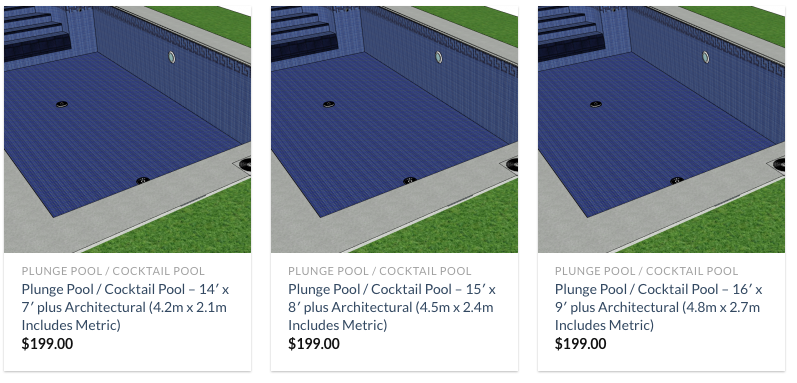
What design features do I need to consider for a mini pool?
When designing a mini pool, there are several features that you should consider to make the most of your space and ensure that your pool is safe and enjoyable. Some of the key design features to consider include:
Size: Mini pools come in a range of sizes, so it is important to consider how much space you have available and how many people you want to be able to fit in the pool. You’ll also need to consider the size of any surrounding deck or patio area.
Shape: Mini pools can be round, square, rectangular, or any other shape that you desire. Consider the shape that will fit best in your space and create the look you want. Also, remember building curved structures is much harder than square or rectangular shapes.
Depth: Mini pools can range in depth from shallow wading pools to pools that are deep enough to dive into. Consider the intended use of your pool and the age and abilities of the people who will be using it when determining the appropriate depth.
Lighting: Adding lighting to your mini pool can enhance its ambiance and allow you to enjoy it at night. There are several lighting options available, including underwater lights, LED lights, and floating lights.
Water Features: Consider adding water features such as fountains, waterfalls, or jets to your mini pool for added visual interest and relaxation.
Decking: Adding a deck or patio area around your mini pool can provide a space for lounging and entertaining. Choose materials that complement the style of your pool and the surrounding landscape.
Safety Features: It is important to consider safety when designing your mini pool. Consider installing a fence or barrier to keep children and pets out of the pool, and make sure the pool is equipped with appropriate safety features such as handrails, ladders, and non-slip surfaces.
By considering these design features, you can create a mini pool that meets your needs and enhances your backyard. If you have any questions or would like me to take a look at your plans and ideas, then please do get in touch below – I am always happy to help.
Can I Help You?
If I can help you in any way I would love to hear from you. You can get in touch using the form below.
Thanks - Andi
 Hi, Andi here. I own Buildahottub.com and also write all of the articles and info pages on the site. Some years back now, I built my own hot tub but struggled to find the information I needed. So, once my tub was complete, I started this website to help others in their own pursuit of hot tub and plunge pools DIY building information.
Hi, Andi here. I own Buildahottub.com and also write all of the articles and info pages on the site. Some years back now, I built my own hot tub but struggled to find the information I needed. So, once my tub was complete, I started this website to help others in their own pursuit of hot tub and plunge pools DIY building information.
Fast forward to 2025, I've helped over 1400+ DIY customers just like you all over the world build hot tubs and pools. Have a good look around the site, there are lots of resources here. Please do get in touch if I can help you. - Cheers, Andi

